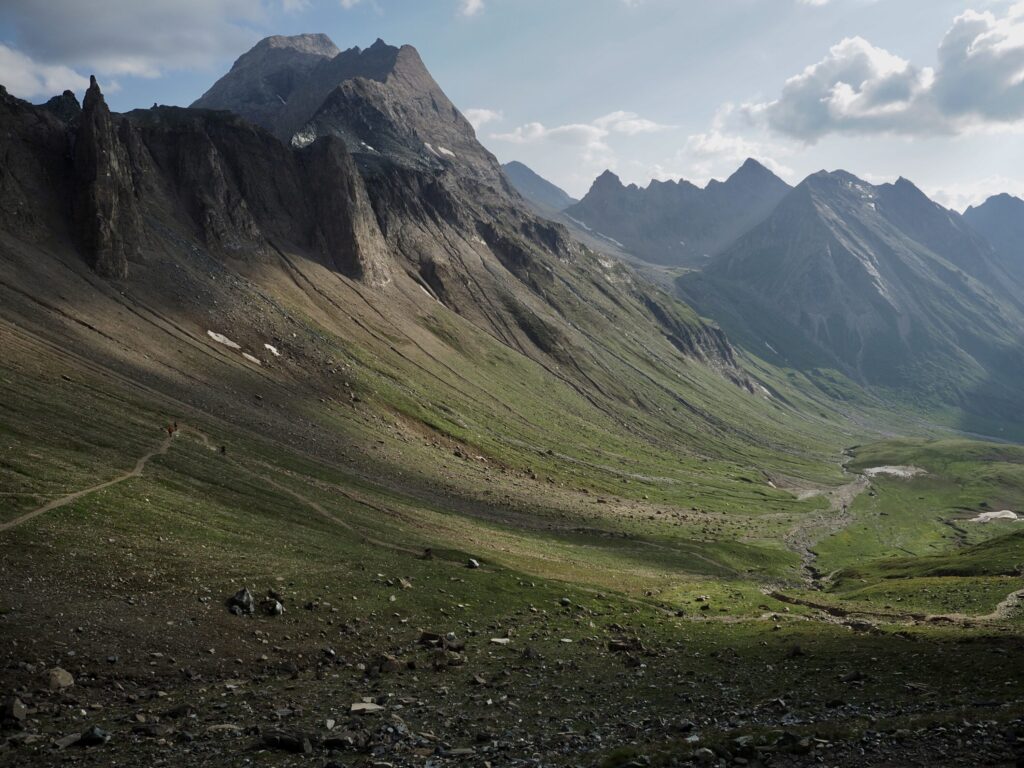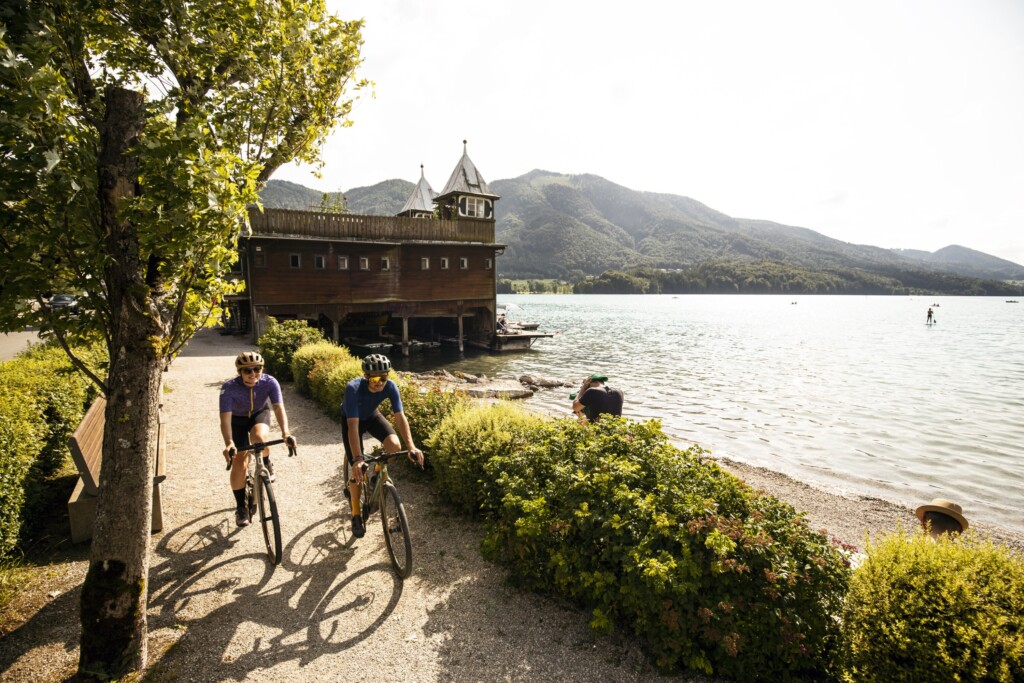Travelling and adventure can mean all sorts of things to different people – from the challenge to the places it takes you. For BASE Collective member Sami Sauri, it’s about discovery and connection. And the tool she uses to make that happen is the bike.
‘Through the bike, you can approach people and landscapes in a way like nothing else. I think it’s the fact that it can take you to these places that you’d never reach by a car. You can be totally in the middle of nowhere, like really out there. Especially if you’re riding gravel,’ she explains. ‘I’ve surfed and done other sports but nothing else provides me the same feelings and curiosity with people that the bike does.’
Born and raised in Barcelona, Sami discovered cycling relatively late on in her life. Hooked initially by the city’s fixed gear scene in her mid-20s, she discovered the connection between body and machine and soon the communities that simply turning the pedals provided. Hours in the saddle became weeks and from riding the hills close to home, she moved around Europe and later to the US in the pursuit of a professional career as a racer.
Nothing else provides me the same feelings and curiosity with people that the bike does
But for Sami, her bike has always been a representation of her freedom. Through her travels, she developed a sharp eye for documenting experience through photography and video which became her new means of expression. Tired of the pressure of competition, documenting adventure and community across the international world of sport became her focus.
As her ambition to explore more and more places grew, she looked to the map for different opportunities to connect through her passion. Wanting to experience a totally different culture in dramatic landscapes seemingly tailor designed for gravel riding, she looked to South America.
‘We wanted something exotic and colourful and at the same time culturally really different to what we were used to, but without such a language barrier,’ she says. ‘I was really intrigued by Bolivia and understanding how the people there live.’
At an altitude of roughly 3650m with a population of more than 800,000 people, La Paz is the highest capital city in the world. Sat in a bowl-like depression it’s surrounded by the high mountains of the Altiplano. Overlooking the city is the towering, snow covered triple-peaked Illimani, the country’s second highest mountain. The Sentinel of La Paz, Bolivia’s Andean pearl.

At an elevation of roughly 3,650 m above sea level, La Paz is the highest capital city in the world.
‘In La Paz, you’re really up there. These people are living all year at altitude. We saw a football match – can you imagine the guys who are from the city down at sea level? To come and play in La Paz, they have to do altitude training!’
Based for the past several years out of the European cycling mecca of Girona – with an elevation of just 76m – Sami knew that riding the gravel trails up into the Yungas that surround La Paz (a narrow band of forest along the eastern slope of the Andes) would mean undergoing some altitude training of her own.
‘I did two and a half weeks of training with a coach at the Cenit Sports Centre here in Girona,’ she says. ‘First I went to Andorra for a long weekend to ride around and sleep on the top and then he gave me the altitude machine. I was doing all the workouts wearing the mask, spending between two and four hours a day with it set to 3,500 to 4,500m. So I’d be sat down with this thing on and my housemate was like what the…?!’
Heading up out of La Paz into the Yungas, straight from the off, Sami was grinding her way up remote, challenging gravel tracks well above 4000m.
‘I was really happy to have that help because I don’t think I would have been able to even sleep one moment or even just walk around La Paz without it. Put into perspective, my route was going up to 4,700m on the first day. That’s nearly the same as Mont Blanc.’

Before the route dips to the subtropical Yungas valleys and the Amazonian lowlands beyond, it is brutally unforgiving.
But between the lung-busting climbs, these vast wide-open landscapes offered some of the best gravel riding imaginable.
‘There was a beautiful section of singletrack and I was like, this is the best thing I’ve ever done in my life! Illimani just behind and all the alpacas around, I was like Wow!! It felt like I was in a movie or something.’
Even with the acclimatisation though, spending time up in the Yungas at such altitude, riding as well as camping in the oxygen starved air, provided little respite and soon enough that would take its toll.
‘On day six, we’d camped at 3,600m, just out on our mattresses and the sleep wasn’t that good and so we were pretty tired in the morning,’ remembers Sami. ‘Because we were going so high, suddenly we were descending really far into the valleys and then had to make all that elevation back up. That was the the hardest part.’
Put into perspective, my route was going up to 4,700m on the first day. That’s nearly the same as Mont Blanc

Sleepless in the Altiplano.
A reminder of the rawness and volatility of this landscape, that same day Sami and the support vehicle became separated by a recent rockfall across the road.
‘It was the only day that I left my suncream in the car too,’ she says. ‘I carried on past the block and about two hours later I was like, Oh, this is really hot and realised I was starting to get really burnt. All I had with me was this little stick for lip protection and just started rubbing it all over my body. It took me nearly five hours to find them again because they had to do a massive detour.’
Once again, subject to the steep valleys of the Yungas, Sami was soon descending into the villages below.
‘The climb back up was absolutely mental. I think it was from 1600m and I had to go back to that track at 3,500m. I was like, guys, I can’t do this. There’s no way. I’m absolutely cooked!’

Sami rides the Death Road in Bolivia, the so-called most dangerous road in the world.
Maybe later, that young girl who saw and tried the bike in the village has that in their head and who knows where that might take her!
But for Sami, adventures like this aren’t about the challenge or the places it takes you, but rather the interactions they afford. Perhaps in her darkest moment of the trip – struggling with fatigue and heat stroke with another mammoth climb ahead – a chance encounter in a local village at her most vulnerable was everything she needed to remind her of the importance of adventures like these and of course, the power of the humble bicycle.
‘I saw this beautiful fruit shop and the whole family came out to greet us. The kids obviously are the most curious about what’s going on in that moment,’ tells Sami. ‘And the girls… I mean, I think that is still one of my best experiences ever.’
While many of the local Yunga villages speak indigenous languages, attending the local schools, the children were able to speak in Spanish. Fascinated by the bike, one by one the kids could experience this powerful machine.
‘I started just holding them on the the top tube, so then they can reach the hoods, but then most of them were tall enough to sit on the saddle and reach the bars too. And when they realise that they’re like, oh, I can make it, but then they couldn’t reach the pedals. It was so cute,’ she remembers. ‘I think each of them tried it like five times and one of them really understood the bike and started going up in the hoods and going. I was like, Holy Moly, we have a champion here!’
With the power of this strong connection, putting into perspective the experiences of the past few days and discovering the purpose of the adventure, it wasn’t easy for Sami to pull herself away from the village.
‘I even tried to get hold of some bikes for them, but it’s so difficult to get them to that point, right in the middle of nowhere in the Yungas. But that’s what makes it special for people who live there. Like, maybe nobody has ridden this before. It’s not like Girona, you know, people aren’t used to seeing this, so for them it’s access to a new world that they might be curious about.
‘The bike has taken me to more places than anything else in the world, through my own power. After a few years, I still look back to Route 66 or the Trans Labrador and I think whoa, I actually rode the length of the United States, you know, and now it’s like I actually went up to nearly 5000m in Bolivia! Trips like this inspire and excite me to go and meet different people from different cultures because, who knows what you can get from that? Maybe later, that young girl who saw and tried the bike in the village has that in their head and who knows where that might take her! That part is really motivating, to help people see that the bike is actually this tool that can take you anywhere around the world!’
Sami chose Columbia Sportswear to help make this trip happen. You can shop her gear here.
Don’t miss a single adventure
Sign up to our free newsletter and get a weekly BASE hit to your inbox
Other posts by this author

Story • Chris Hunt • Jul 04, 2023
Evolution of Flow: E-mountain Biking in the Swiss Alps
Exploring Crans Montana and the Tièche valley on two wheels

Story • Chris Hunt • Feb 09, 2023
Throat of The Dog: Bikepacking the Zillertal Alps
A 175km traverse of the mountainous spine between Italy and Austria

Story • Chris Hunt • Jan 10, 2023
Can Bikepacking Fight River Pollution?
The Slymefoot Slide is a brand new multi-day bikepacking route in the heart of the Northumberland National Park
You might also like

Story • Matthew Pink • May 30, 2025
Smuggler lanes and donkey trails: e-MTB in Andalusia
Hazy days zig-zagging the Andalusian sierra through a mesh of secret trails

Photo Essay • BASE editorial team • Mar 18, 2024
Hunting happiness through adventure in Taiwan
BASE teams up with adventurer Sofia Jin to explore the best of Taiwan's underrated adventure scene.

Story • Katherine Moore • Aug 11, 2023
Testing and tasting the Salzburg gravel scene
What makes the city of Salzburg the ideal jump-off for exploring the Austrian alps?











